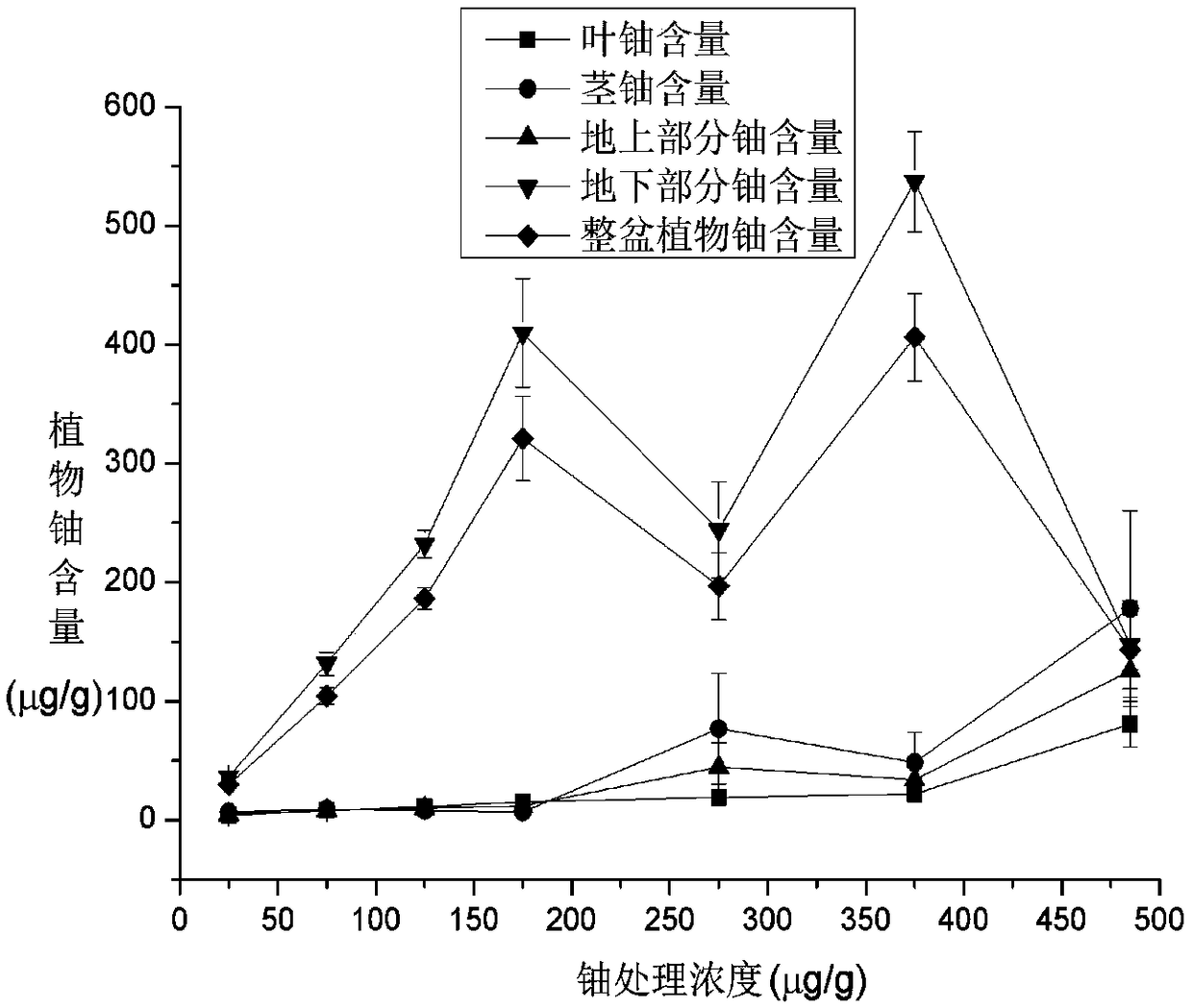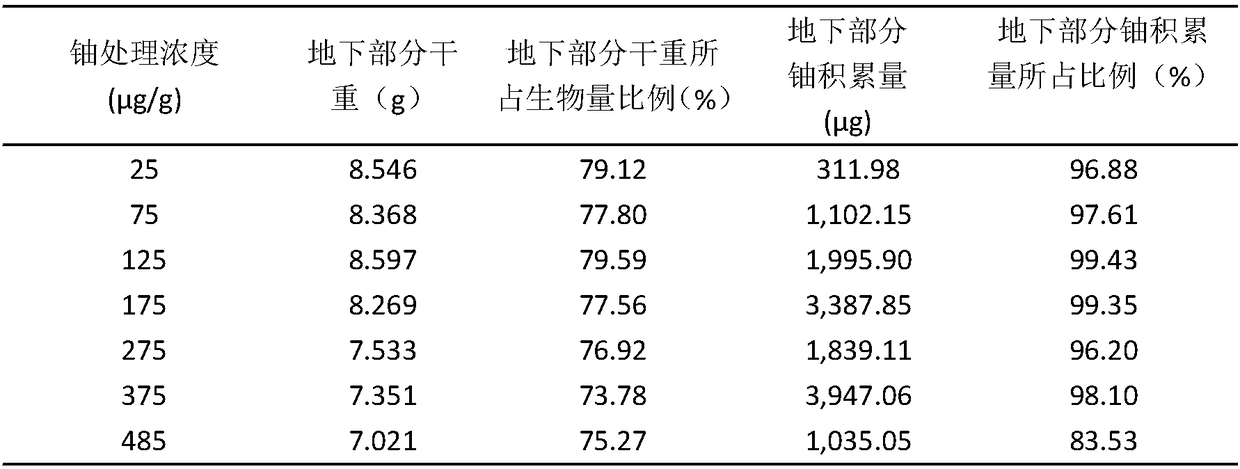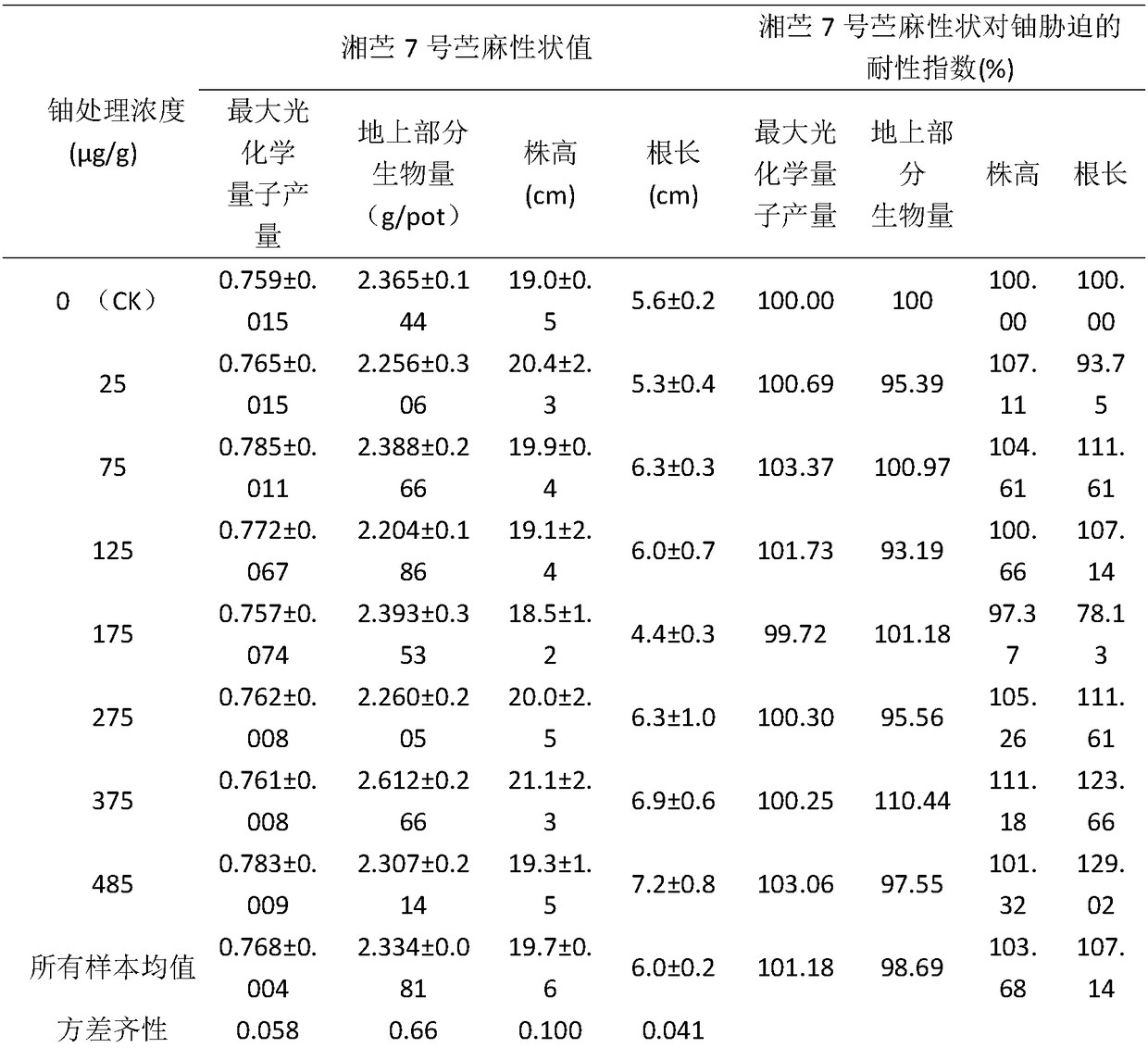Efficient method for repairing uranium contaminated soil by plant extraction
A plant extraction and repair method technology, applied in the field of contaminated soil repair, can solve problems such as imperfect plant protection measures, failure to repair pollution, unsatisfactory results, etc., to achieve convenient harvesting and centralized treatment, mature cultivation technology, and plant protection measures perfect effect
- Summary
- Abstract
- Description
- Claims
- Application Information
AI Technical Summary
Problems solved by technology
Method used
Image
Examples
Embodiment 1
[0052] (1) Soil preparation and basal fertilizer application: first remove all weeds, and use a little pesticide to kill underground pests. Deep plowing and fine finishing generally requires deep plowing of 0.3-0.4 meters to ensure loose soil; the width of the border is generally about 2 meters, and can be as wide as 3-4 meters depending on the terrain and soil layer; the application of base fertilizer is 5×10 6 kg / square kilometer.
[0053] Above-mentioned basal fertilizer is obtained by following method:
[0054] 1) Prepare the following raw materials in parts by weight:
[0055] 8 parts of nano-carbon, 32 parts of urea, 6 parts of diamine phosphate, 10 parts of potassium chloride, 6 parts of plant ash, 25 parts of human and animal manure, 12 parts of orange peel, 3 parts of borax, 12 parts of ginkgo biloba, 1 part of azotobacter rotundum , 2 parts of yeast, 0.5 part of Aspergillus niger;
[0056] 2) Mix nano-carbon, urea, diammonium phosphate, potassium chloride, plant a...
PUM
 Login to View More
Login to View More Abstract
Description
Claims
Application Information
 Login to View More
Login to View More - R&D
- Intellectual Property
- Life Sciences
- Materials
- Tech Scout
- Unparalleled Data Quality
- Higher Quality Content
- 60% Fewer Hallucinations
Browse by: Latest US Patents, China's latest patents, Technical Efficacy Thesaurus, Application Domain, Technology Topic, Popular Technical Reports.
© 2025 PatSnap. All rights reserved.Legal|Privacy policy|Modern Slavery Act Transparency Statement|Sitemap|About US| Contact US: help@patsnap.com



